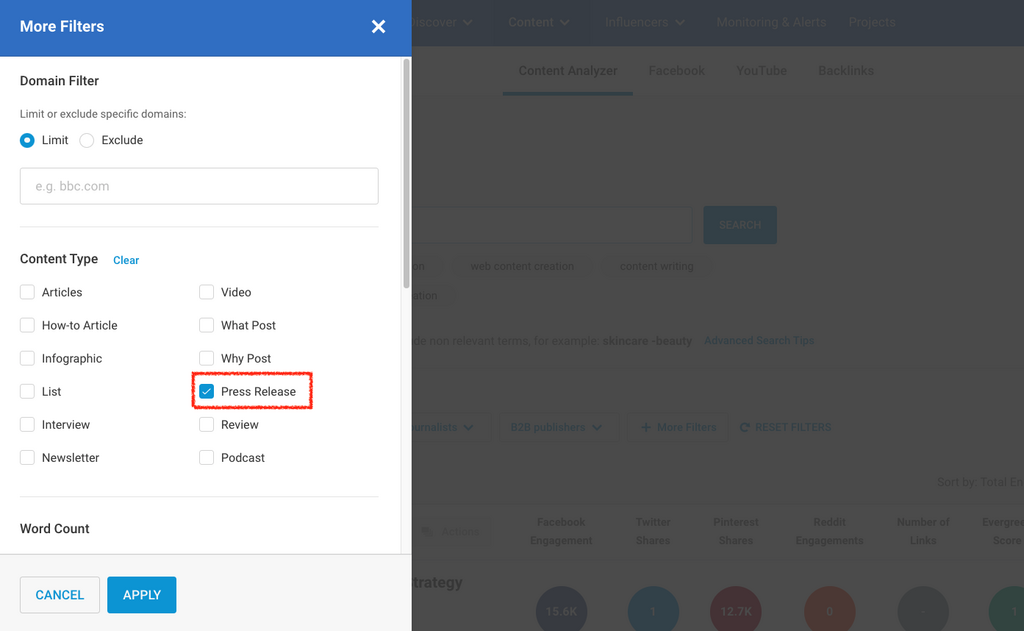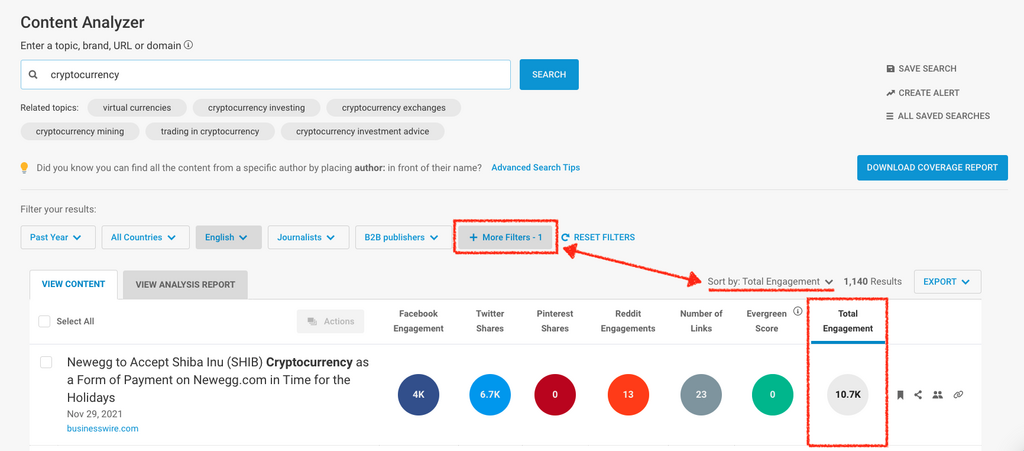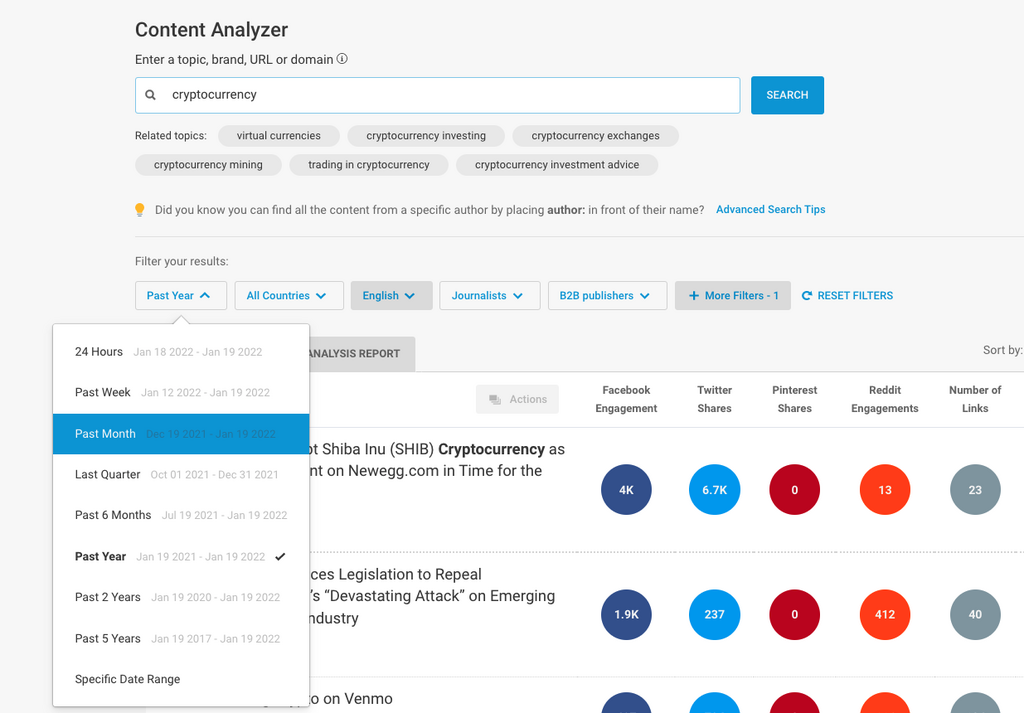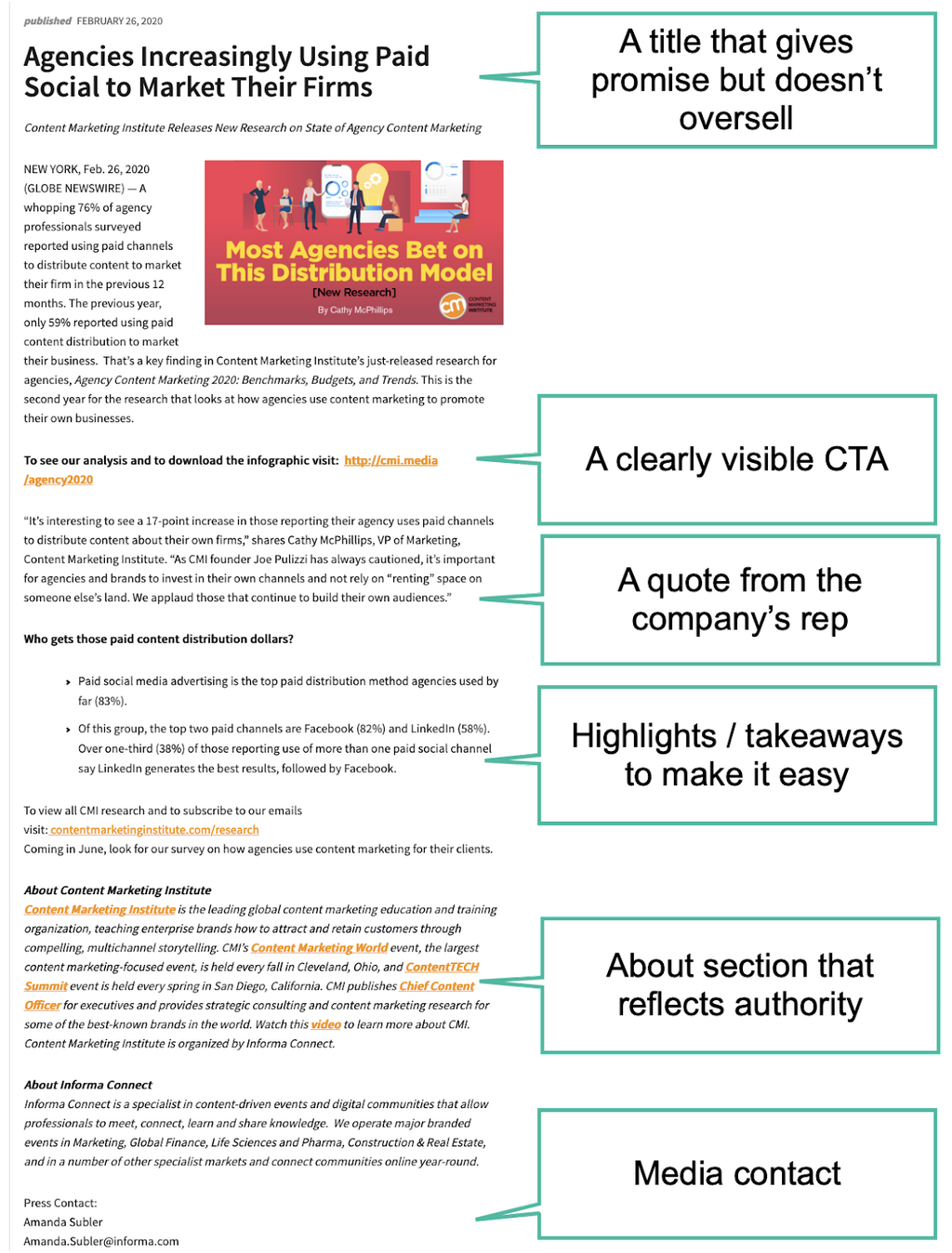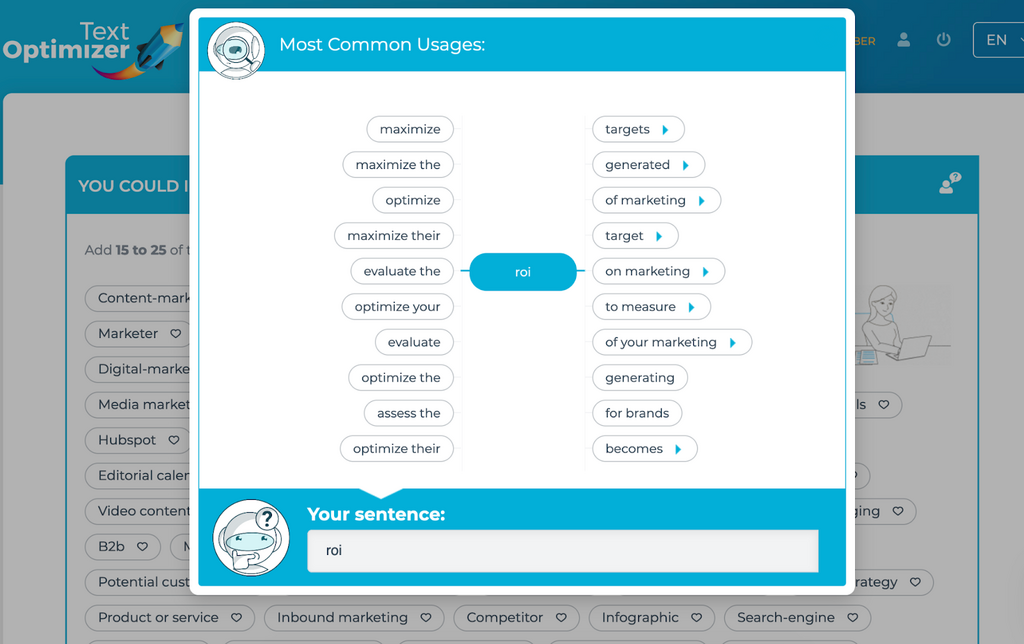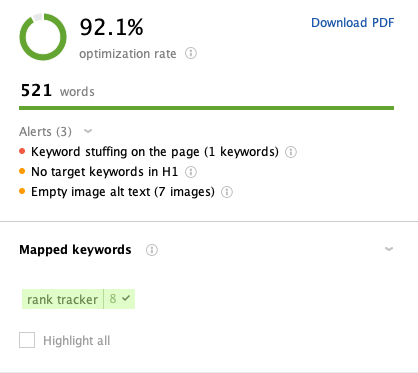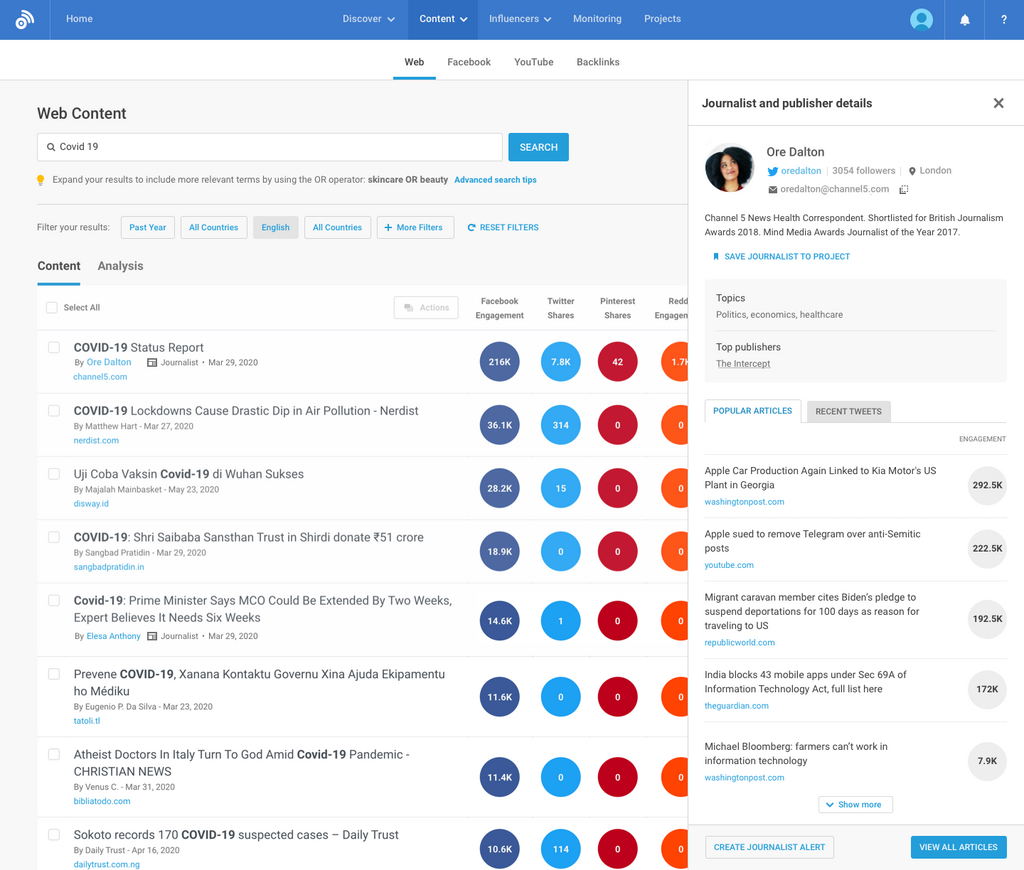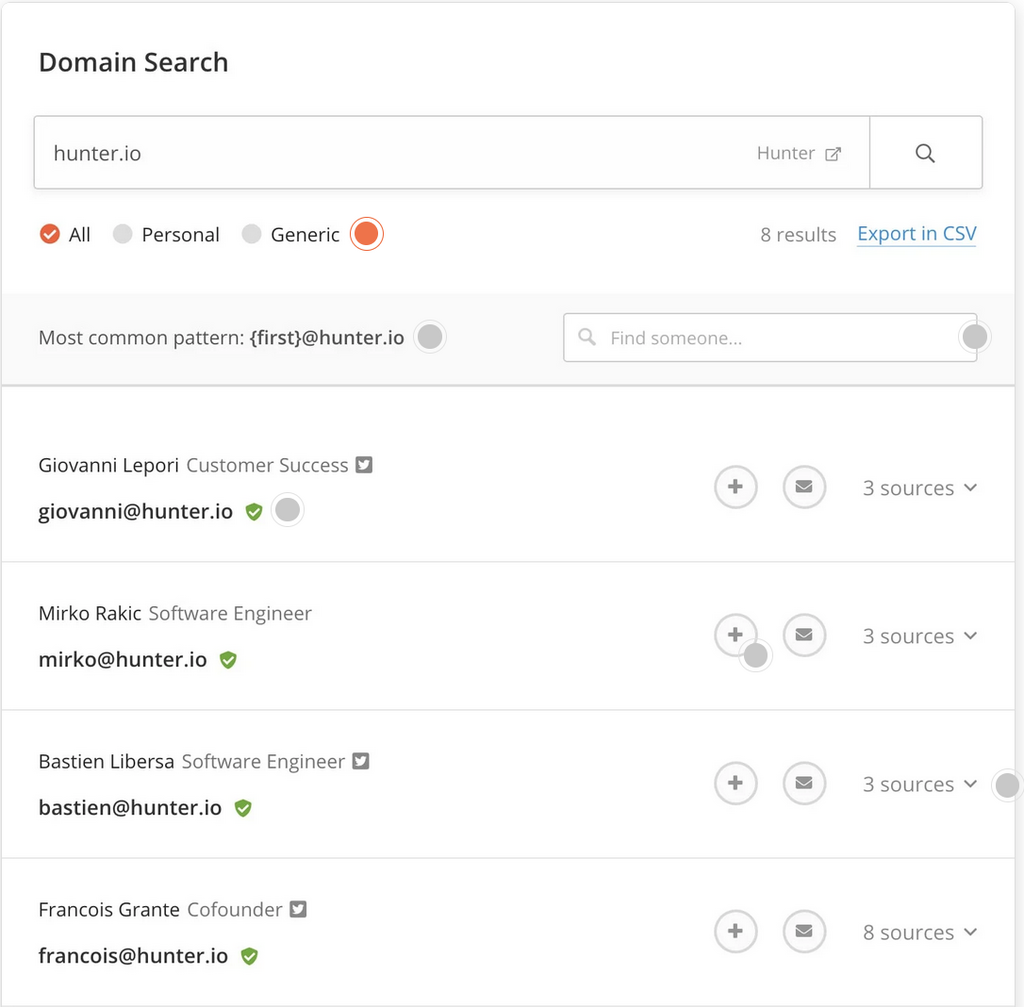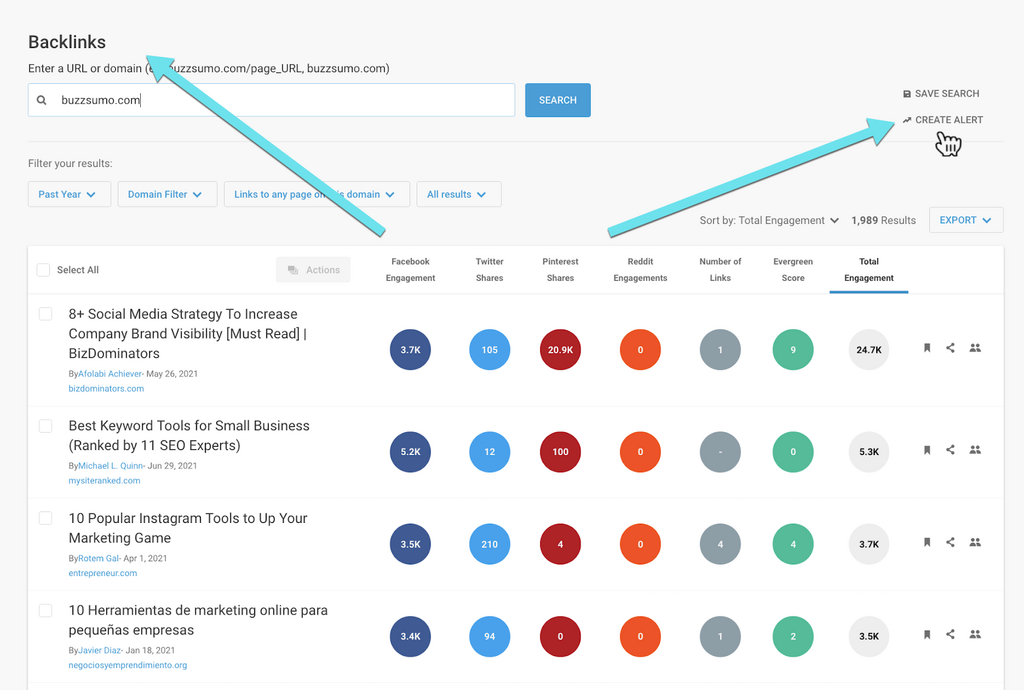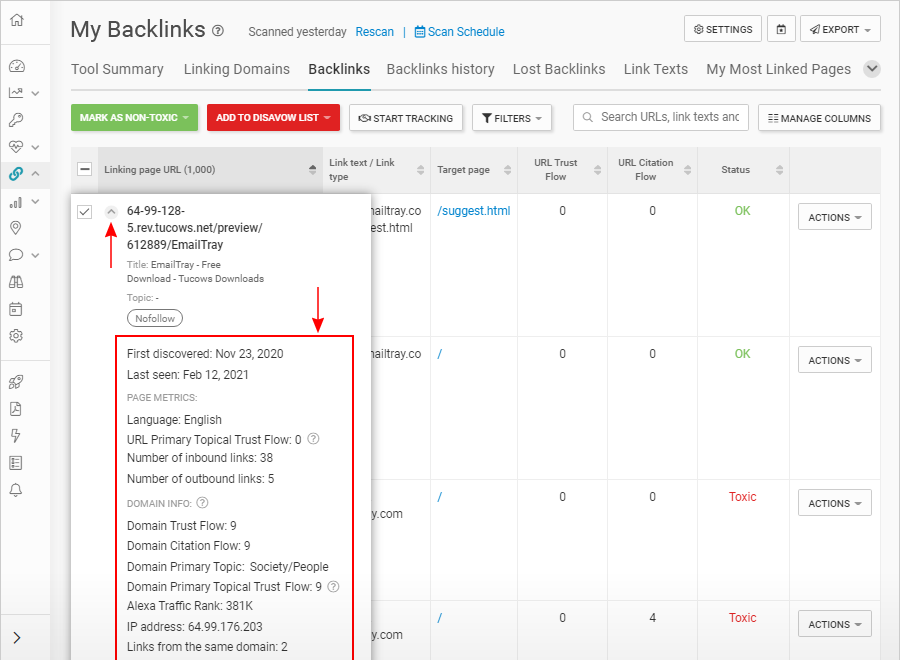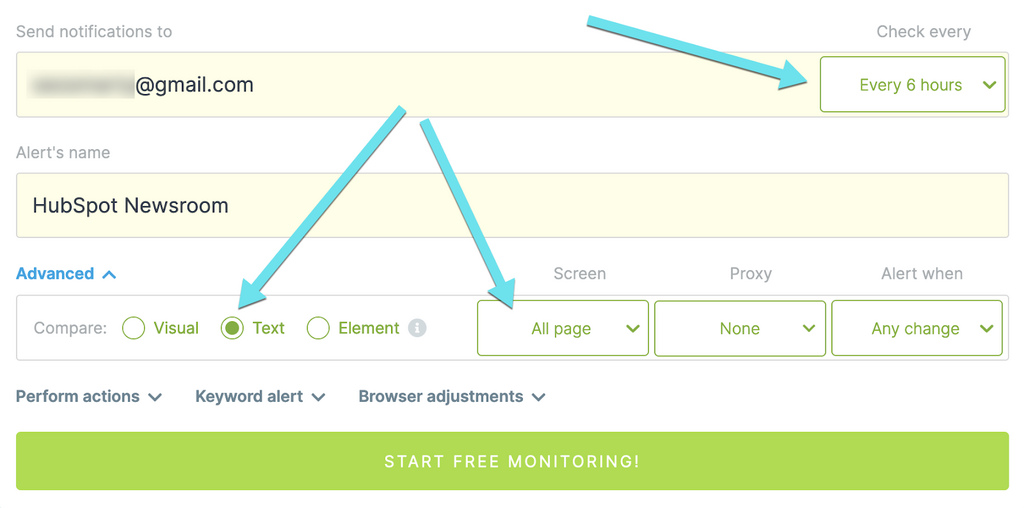Are you looking to build a stronger brand and acquire more backlinks to boost your authority?
Of course you are!
A well-defined press release strategy is exactly what you need.
Contents
- Get inspired by looking at your competitors or peers
- 7 easy steps to perfect your press release format
- Take your press release copy seriously
Press release distribution done right
What is a press release?
A press release is traditionally a way to communicate essential news about a company to journalists or media publishers.
In the digital world, press releases have gained a pretty poor reputation, because lots of SEOs started using press releases to build cheap PR links via online press release distribution services.
As a result, Google had to make it clear that links in press releases should be nofollow, and later began to ignore those links.
Yet, press releases were never meant to be a cheap PR link building tactic. In fact, when done right, they can boost your brand’s recognizability and authority.
Here’s how to do press releases in 2022 and beyond...
How to write a press release
Get inspired by looking at your competitors or peers
What have your competitors or peers been doing, and did any of your press releases work really well?
This kind of data will help you make more informed decisions and find inspiration.
BuzzSumo has a helpful filter allowing you to research successful press releases in your niche.
Using the Content Analyzer, type your keyword, click “More Filters” and there select “Press releases” option:
The results are going to be sorted by the total engagement, which is a great PR metric to quickly evaluate the virality of each press release:
Andrew Bruce Smith
Founder, Escherman
“If you are hoping your press release itself will gain engagement, use Buzzsumo to see what type and kind of press releases actually get engagement in your industry or sector.”
Scroll down and scan the headlines to get a better feel of which types of topics seem to resonate in your niche.
It is also a good idea to play with date range filters to review older or more recent content:
Vic Miller
VP PR & Communications
“An effective press release should tell the reader what they most need to know in the first paragraph – even better, in the title and subheading. If you're struggling to achieve this then it either means you have too much to say for one release, or even worse, not anything of great importance or significance to deliver.”
7 easy steps to perfect your press release format
Whether you’re doing a press release to acquire organic links from journalists, or to solidify your online reputation (or both), you need to follow a well-defined press release format.
This will make it easy for journalists to quickly grasp its contents.
And that includes...
1. A title that gives promise but doesn’t oversell
Create a title that attracts attention (without being click-baity). Here’s what you need to write the best headlines.
2. High volume keywords
Using searchable keywords to get that PR page additional exposure from Google’s organic results, Top Stories and Google News.
3. A clearly visible CTA
Remember the goal is not just to inform, but to encourage action. Include your CTA high up in your press release to make sure the reader doesn’t miss it.
4. A quote from a VIP
Include quotes from the key people – ie. your company’s CEO, the influencer you are hiring, etc.
5. Bullet pointed highlights and takeaways for easy reading
Make your press release scannable for readers that are time-poor and want the TL;DR version.
6. An “About” section that reinforces authority
Include “About the company” section to give journalists and media publishers some information for news coverage.
7. A media contact
Don’t forget to add your links, press contacts, and other CTAs enticing media publishers to reach out.
Here are many more press release examples to use for inspiration!
Take your press release copy seriously
Obviously, take your copy very seriously:
Text Optimizer can help you create a relevant and engaging copy by suggesting you use semantic context for your target keyword. It is a nice way to optimize your content as well as get some inspiration:
On the other hand, you should make sure your copy is not over-optimized (it’s easy to get carried away while adding all relevant keyword variations). To make sure you’ve no keyword stuffing issues (keeping all important page elements optimized), you may use a tool like WebSite Auditor.
Press release distribution done right
Publishing your press release through a press release distribution service like PRweb or a similar one is no longer enough (if it ever was).
Although it’s likely to bring in additional exposure through syndicating your update through a few well-known news outlets, it’s unlikely to help you get noticed by high-profile journalists or bloggers.
Kelsey Libert, co-founder of Fractl, writes about the power of earning syndication organically in 4 Agency PR Tactics That I Avoid At All Costs.
And BuzzSumo's latest research on syndicated news coverage gives you advice on which networks of publishers to pitch to get the most mileage out of your press.
This involves discovering publications and journalists that drive the most links, to tap into networks that will give you the most coverage.
For example CNBC owns national and regional news outlets, which means that if you get coverage in CNBC, you'll likely also get coverage in other regional, affiliated publications.
Beyond organic syndication, here are three other things you can do to distribute your press release...
Plan your outreach strategy
What you need is a well-planned outreach strategy to bring your update to key media publishers in your niche and outside of it.
Use BuzzSumo to identify journalists and bloggers in your niche, find their social media accounts, and identify the best way to personalize your message.
BuzzSumo’s Journalist Profile tool shows you a list of articles written by a journalist, ordered by engagement – alongside the topics they most commonly write about.
Mentioning one of these articles and/or topics in your email outreach will help you create a hyper personalized message
Once you’ve got the ball rolling, and done a good amount of outreach , you’ll soon be able to tell which of your email templates worked best.
Additionally, Email Hunter is a cool tool that will help you find contacts of those journalists as well as alternative contacts. Their Email Verifier feature is really a time saver!
Take advantage of social media
Don’t forget to incorporate social media in the process. For example, a quick message on Twitter notifying a journalist you sent an email can do wonders for your response rate.
In PR, social has become an important tool for crisis management, journalist outreach, and larger brand accessibility.
But another huge consideration is social media influencers.
With Twitter and Instagram running at fire speed, you can now have direct links to media contacts to promote your press release.
When used properly, social channels offer more tactical starting points for developing deeper influencer relationships.
Spend some time identifying social media influencers, creating detailed profiles of those influential accounts, and building out lists.
Read BuzzSumo’s 4 steps for finding influencers here.
Don’t forget that you will be able to revisit these contacts for future PR campaigns.
Build stronger relationships: Promote your promoters
Once you have a journalist or a blogger cover your story, don’t forget to do your best to promote the piece.
Everyone loves being mentioned, so your effort will be much appreciated.
Always tag the author and the publication thanking them for the coverage. This will notify your media contact of your social media efforts and will engage them even further.
Curate your own press releases
Every piece of important news builds your company’s reputation and demonstrates your growing authority.
Moreover, your story and press coverage makes your brand more interesting for journalists and bloggers, meaning they’ll be more willing to tell your story.
This is why creating a standalone press page is such a good idea: A detailed press page is your journalistic outreach landing page.
Make sure to keep it updated, promote it on social media and link to it in your emails:
- Link to your past press releases on that page
- Add “Featured in” section linking to the previous journalistic coverage. Pick a plugin to show these in a slider.
- Include your press contacts (make sure to give several options, like email, phone, and personal social media accounts of your press reps)
- Add testimonials or reviews from bloggers and journalists. Here are a few plugins to easily do that.
- Include your high-resolution logo and some product images for media publishers to use if they choose to write about you. In essence, the more optimized images you make freely available to your publishers, the better you will be able to control the visual context around your brand (and those image carousels that show up for your branded searches)
Your press page should make it clear enough why your company is interesting enough to be covered.
Monitor and analyze
Keeping an eye on your progress and collecting your own data is important for making your PR strategy more effective.
Keep a close eye on your progress
To succeed you ultimately need to know your goals, and do your best to monitor them.
As I mentioned above, my two biggest goals behind creating press releases (or including them in clients’ roadmaps) is to:
- Build a stronger brand
- Generate some organic links from media publishers
Monitor your mentions
BuzzSumo offers a flexible brand monitoring solution alerting you to new brand mentions, and organizing these references for easy access and analysis:
You can read more about the benefits of BuzzSumo brand monitoring here...
Monitor your links
BuzzSumo also offers a backlink monitoring feature, which will help you catch those new links your PR campaign will be bringing in.
You can set-up email alerts whenever you land a new link – or, if your brand is a big deal and gets a bunch of links every day – you can set up a daily round-up digest.
WebCEO’s backlink checker is another useful tool to keep an eye on your backlinks. Not only will it discover your new backlinks for you, it will also keep a detailed record of each one allowing you to go back in time and compare your campaign performance:
Don’t forget to thank your promoters for each new link!
Organize your most valuable links
Keeping things organized is a good idea for your future campaigns. Grab your most valuable mentions and set-up tracking to always keep them handy.
Link Checker will keep a close eye on all your acquired links and alert you of any changes:
Keep an eye on your competitors’ press releases
Monitoring your competitors’ brand mentions is important for understanding what they are doing and if they are going to outperform you in the near future.
But it is also a good idea for inspiration.
BuzzSumo’s brand monitoring suite will alert you to competitors’ new mentions, so don't forget to add your competitors there, along with your own brand.
For more focused monitoring, consider setting up tracking of your competitors’ Press page. Visualping will alert you the moment there’s a new press release added to that page for you to always be on top of your competitors’ PR tactics:
Kellan Terry
Head of PR & Communications
“Press releases are the cornerstone of any major announcement, and a valuable tactic when sharing any brand news. When drafting a release it’s important to differentiate between facts and hyperbole. Oftentimes the writer has some sort of personal investment in the announcement itself, and that can lead to some overly grandiose claims. At the end of the day the goal is to be clear and concise – as is true with any means of effective communication. Leave the amped-up statements and jargon out of the release. Your audience will appreciate it, and you’ll end up with a far clearer message in the end.”
Most importantly, use press releases only when you have real news to share
One of the biggest problems with press releases is that lots of brands were using them to announce just about anything.
Did your company build 1,000 followers on Twitter? That may be an important milestone for your in-house social media team but it is hardly a story worth announcing to the public.
Did you acquire a pretty well-known niche startup (and have huge plans for it) or hire a niche influencer? This is something worth bringing a journalist's attention to.
Any time you are considering announcing anything via a press release distribution service, think about that update this way:
- Would journalists and bloggers find it interesting enough to cover and why? Would it bring links and brand mentions?
- Would this story help you better manage your online reputation by associating your brand with well-known entities?
If you answer “yes” to one or both of these questions, that press release may be worth doing.
Press releases are good for SEO for many important reasons, including building brand awareness, creating niche associations with other entities (which will help Google recognize you as a brand and create your own knowledge panel) and, yes, links.
Those links should not be coming from press release syndication networks, but from real journalists who’ll find your story interesting enough to cover.
Both PR and SEO professionals should no longer value quantity over quality.
Google has shown itself to be in favor of shareable content—things real people care about, things that can’t be gained with just having some good keywords in the right places.
In the PR placement hierarchy, a dozen cheap, low level clips hold no weight against a single New York Times feature.
To achieve the latter, both the press release and the pitch must be newsworthy, and so must an outreach email.
Crafting a successful pitch is no mean feat, so BuzzSumo analyzed 600K journalist profiles to help you understand how to find a journalist and craft a compelling pitch.
Check out the report for 20+ tips on pitching, plus data on what journalists care about across industries.
While there’s no true formula for creating popular content, there are important factors to use in a quality litmus test - the same factors journalists ask themselves when taking on a story:
- Is it original and newsworthy?
- Does it include solid research?
- Does it approach a problem in a unique way, offering a real solution?
- Do I or anyone else care?
Press releases can still be an effective marketing tactic, but only if you put some time and effort into planning, writing, and distributing your company’s press release.
Create more effective copy, build long-lasting relationships with media publishers and journalists, and aim to build brand awareness if you want your press release strategy to succeed.
If you like want to check out any of the BuzzSumo tools and features showcased in this blog, sign up for a 30-day free trial for no-holds-barred access to the platform.
Already signed up? Find out how to use BuzzSumo in 30 days, and get the most out of your trial.
Categories
Digital PRCategories
Digital PRThe Monthly Buzz⚡
Subscribe to BuzzSumo's monthly newsletter to:
Stay up-to-date with the best of the best in content marketing 📝
Get data-informed content, tips and tidbits insights first 👩🏻💻
Read top shared content by top marketing geeks 🤓
Try
Enter any topic, term or url to search to see BuzzSumo in action. It’s free!
100% free. No credit card required.
